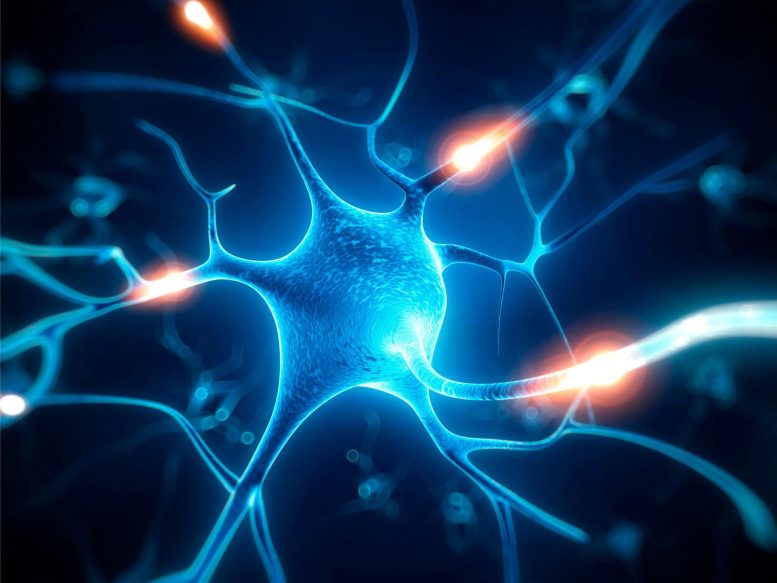
Salk Institute researchers have identified that the protein Mitf plays a crucial role in repairing nerve damage in peripheral neuropathy. This breakthrough paves the way for novel therapies that enhance nerve repair functions, potentially benefiting millions suffering from this condition.
Researchers at the Salk Institute have identified the protein Mitf as a key mediator in the repair processes of the peripheral nervous system in mice, suggesting a promising new therapeutic target.
Peripheral neuropathy affects over 3 million people annually in the United States, causing pain and loss of sensation due to nerve damage outside the brain and spinal cord. This condition can result from various causes including diabetes, injury, genetic disorders, and infections. Salk Institute scientists have made a significant discovery in mice regarding the repair of damaged nerves in peripheral neuropathy. They found that the protein Mitf activates the repair function in specialized Schwann cells of the nervous system.
Recently published in the journal Cell Reports, this discovery could pave the way for innovative treatments aimed at enhancing the repair process and effectively treating peripheral neuropathy.
“We wanted to know what mechanisms control damage response in peripheral nerves under varying conditions—like acute trauma, genetic disorders, or degenerative diseases,” says senior author Professor Samuel Pfaff. “We found that Schwann cells, which are special cells in nerves that protect and support neurons’ axons, enter their repair state because of a pathway mediated by the protein Mitf.”
Understanding the Peripheral Nervous System
The peripheral nervous system is made up of all the nerves that branch out from the brain and spinal cord to give us sensation throughout our bodies. There are many cell types in peripheral nerves, but Pfaff and his team focus on understanding neurons, which transmit information throughout the nervous system, and Schwann cells, which protect healthy neurons and repair damaged ones.
The peripheral nervous system’s ability to repair damage is remarkable considering that the central nervous system—made up of the brain and spinal cord—is not able to repair damage. Yet, the mechanisms that orchestrate this feat have remained poorly understood.
To unravel how Schwann cells differentiate to begin repairing peripheral nerve damage, the researchers looked at mouse models of Charcot Marie Tooth disease (CMT), a type of hereditary neuropathy.
“Going into this project, I thought that when you have a genetic nerve degeneration disorder, cells are dying and recovery isn’t possible,” says first author Lydia Daboussi, a former postdoctoral researcher in Pfaff’s lab and current assistant professor at UC Los Angeles. “But our findings show that there are gene programs turned on by Mitf that repair some of the damage done in those chronic disease scenarios, and when you turn those programs off, disease symptoms get worse.”
The Potential of Schwann Cell Repair Programs
In mice with CMT, the researchers noticed that the Schwann cells completing the repairs had high levels of Mitf in their nuclei—where the genetic instructions for how to be a Schwann cell and how to conduct repairs are stored.
Upon investigation of this relationship between Mitf and Schwann cells, they found that Mitf was in the cytoplasm of Schwann cells until sensing neuronal damage. Damage then prompted Mitf to relocate from the cytoplasm of the cell to the nucleus, where it would direct the Schwann cell to make repairs.
To validate the importance of Mitf in creating repair Schwann cells, the researchers removed Mitf altogether. In cases of both trauma and CMT, nerve repair was arrested in the absence of Mitf—demonstrating that Mitf is required for peripheral nerve repair and regeneration.
According to Daboussi, Mitf acts like a fire extinguisher. Always there, sitting in the Schwann cell, unnoticed until damage occurs. And when that damage occurs, Mitf is ready to go and immediately turns on the cell’s repair functions.
Most surprising, noted Pfaff, was that Mitf was orchestrating these repairs during a chronic disease like CMT.
“Harnessing Schwann cell repair programs has great potential in treating chronic diseases,” says Pfaff, also the Benjamin H. Lewis Chair at Salk. “It’s possible that with targeted therapeutics, we can prompt more Schwann cells to repair peripheral nerve damage and push those repairs to completion in chronic cases. Furthermore, now that we have a better grasp on the repair mechanisms, we can see if it’s possible to initiate repairs in the brain stem and spinal cord, too.”
In the future, the researchers want to look more specifically at diabetes neuropathy—the most common peripheral neuropathy condition. They also hope to explore therapeutics that bolster this repair pathway to create more Schwann cells programmed to repair damage, regardless of if the source is trauma, genetics, or development over time.
Reference: “Mitf is a Schwann cell sensor of axonal integrity that drives nerve repair” by Lydia Daboussi, Giancarlo Costaguta, Miriam Gullo, Nicole Jasinski, Veronica Pessino, Brendan O’Leary, Karen Lettieri, Shawn Driscoll and Samuel L. Pfaff, 28 October 2023, Cell Reports.
DOI: 10.1016/j.celrep.2023.113282
Other authors include Giancarlo Costaguta, Miriam Gullo, Nicole Jasinski, Veronica Pessino, Brendan O’Leary, Karen Lettieri, and Shawn Driscoll of Salk.
The work was supported by the Sol Goldman Charitable Trust, Howard Hughes Medical Institute, National Institutes of Health (grants NCI CCSG: P30 014195, NCI CCSG: P30 014195, S10 OD023427, S10 OD026929, 1 RO1 NS123160-01), a George E. Hewitt Fellowship, a Salk Women & Science Fellowship, and a Jonas Salk Fellowship.

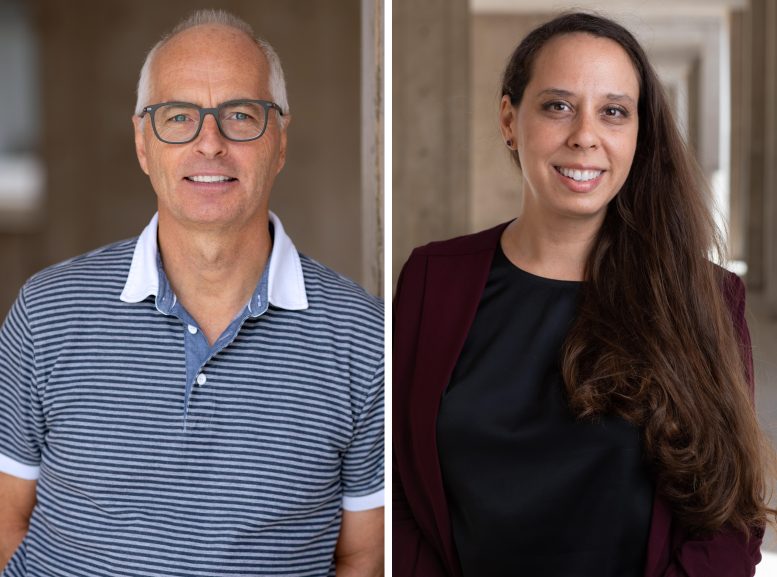
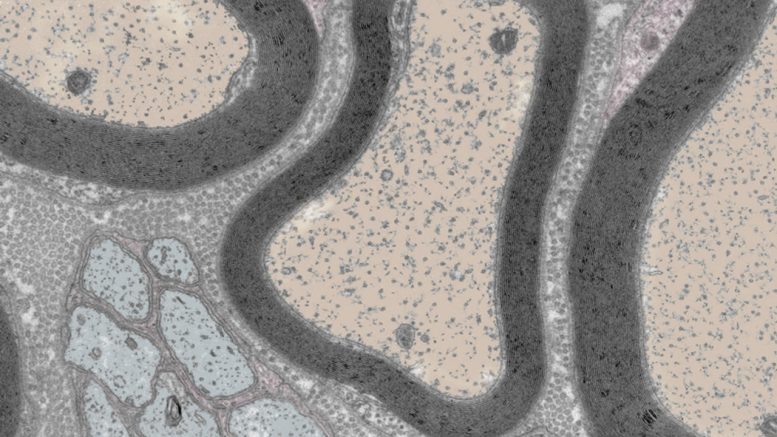





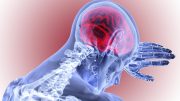

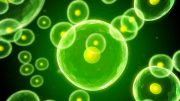
I’ve suffered peripheral neuropathy in my feet for many years. It has been blamed on nerve damage in my back (I’ve had 4 back surgeries over the years) and called “chronic”, which supposedly implies that it is no repairable.
About 8 months ago I began taking the supplement called Lion’s Mane, which is a mushroom and people claim that it has helped with their peripheral neuropathy. I bought some with no real expectations of any improvement.
However, I am surprised that buy the time I finished the first bottle, I have actually seen improvement! I bought another bottle and continue to see improvement, though it is slow.
Not only are my feet noticeably less numb (perhaps a 50-60% improvement) but another condition, regular itching on my back, which had also been attributed to nerve problems, has cleared up.
I’ve even gained some strength back in my left big toe, so that I can now raise it against some resistance, something I could not do previously.
The article is exciting. Nerve repair is mostly beyond medicine, for now. I’m hopeful this discovery will lead to new medications that get my Schwann working hard.
I hadn’t heard of Lion’s Mane supplements for neuropathy, only for psychological disorders, but based on the same neuroprotective principle. Thanks for your detailed comment. I’ll be researching that for some time. Good to hear about the improvement, keep up the effort!
Supplements I have researched that you may want to look into include Natural Egg Membrane (NEM), vitamin K2, turmeric (curcumen), parsley, aronia (black chokeberry), kratom, krill oil, and collagen.
Check this URL out:
https://examine.com/supplements/lionsmane/research/#4J4rj29-interactions-with-neurology
I did some preliminary research. One study even had Lion’s Mane repairing lesions in the basal ganglia of the brain. That’s shocking. I was expecting a limited neuroprotective effect, like with the antioxident aronia polyphenols. Preventing damage, as in, not repairing brain damage. I really don’t listen to Paul Stamets enough, but he wears a mushroom as a hat.
Based on the safety profile (nontoxic, rarely an allergen), I’ve already parted with some cash buying it while I continue reading. At best, I might improve some mild neuralgia and parasthesia. At worst, I have an exotic mushroom soup flavoring.
That link is really surprising too, with the increase of nerve-growth-factor coming from epigenetic effects. I’m curious if the neuronal growth could increase pain sensation (scitechdaily’s “Back Pain Breakthrough: Existing Drug Killing Off Senescent Cells Could Provide Relief”). Also curious about the success of the ethanoic extract versus the failure of the water extract, so I should probably take it with ethanol.
I have a great deal of respect for people who improve their lives using scientific research, particularly when they improve themselves, their physical being. I’m sure doctors will cringe thinking of biohackers playing with RFID chips, but translating obscure specialized data into healing can be done personally when doctors don’t. When the suggestion is passed on and improves another life, it’s a real gift.
Often permanent loss of vital neurocells occure due to direct affection of bacteria.This can be treated by choosing right alternative path,then.